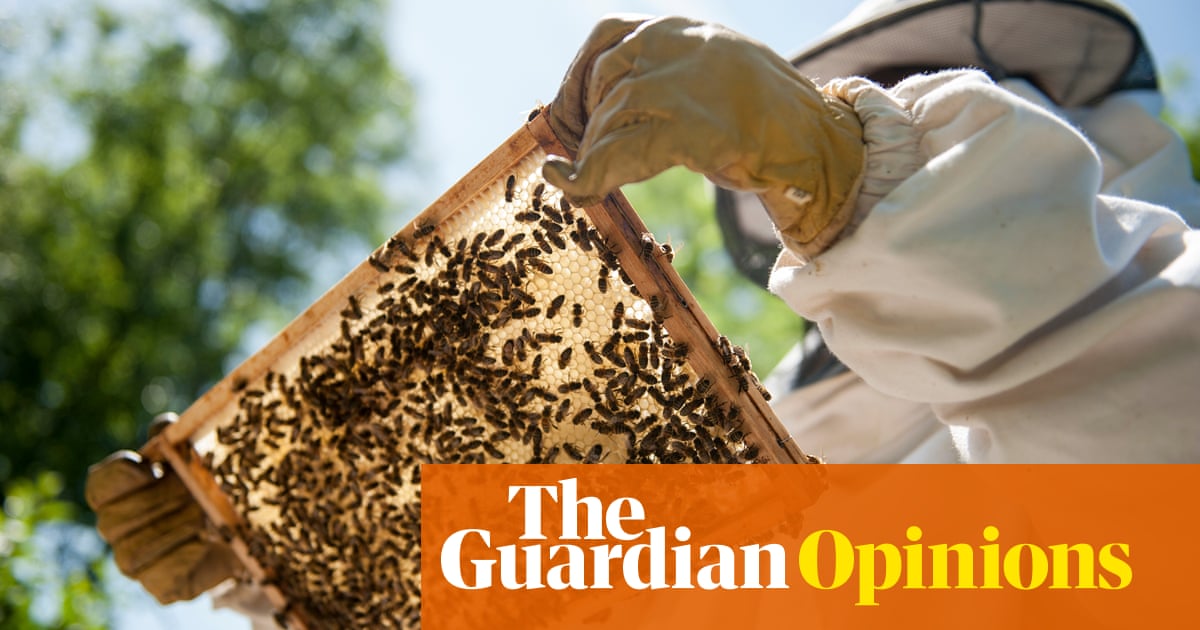
I took up urban beekeeping more than a decade ago with the best intentions. I wanted to help to save bees from the many threats they faced in the countryside – the modern farming practices that douses crops in toxic pesticides and robs bees of wildflower meadows. My small back garden filled with bee-friendly flowers seemed like a paradise in comparison.
But what I didn’t know was that by keeping bees I would only be helping one species of bee – the domesticated honeybee, which doesn’t really need saving – and possibly harming others.
Most people think all bees make honey, are striped, sting, and live in a colony with a queen, but this isn’t the case. There are 270 different species of bee in the UK, and the honeybee is the only one that fits that description. Globally, there are about 25,000 different types of bee; many are harmless, they come in a plethora of patterns and colours, and only a tiny percentage live in social colonies. The overwhelming majority are solitary, which means that the female bee nests alone in nooks and crannies or makes underground burrows in which to lay her eggs. These solitary bees, along with bumblebees – the plump, densely haired ones that seem to defy aerodynamics – are all wild insects, which puts them at much greater peril from habit loss than the mollycoddled honeybees we give hives to live in.
When I collected a swarm of honeybees from my local beekeeping association to put in my hive, I knew none of this, nor that my newcomers may do more harm than good.
Little research had been done back then to understand the decline in wild bees and other pollinators, including the potential negative impact played by managed honeybees. But recent studies conducted in Europe and North America seem to suggest that when honeybees are introduced into urban areas they can outcompete the wild bees.
Bees feed only on nectar and pollen, from a diversity of flowering plants, and in return pollinate them. Honeybees have an unfair advantage over wild bees when it comes to competing for nectar and pollen because there are about 50,000 of them in a hive at the height of the summer, compared with a hundred or so bumblebees in a nest, or a single solitary bee. They are also capable of foraging much further than other bees, and have devised an ingenious waggle dance to communicate to their fellow workers the directions and distance to an abundant source of food.
In Munich, an increase in hives in the surrounding area reduced the number of wild bees recorded between May and July in the city’s botanical garden. Similarly, in Paris, fewer wild bees were observed when more hives were introduced across the city. The findings were echoed in Montreal, which between 2013 and 2020 witnessed a twelvefold increase in hives from 250 to almost 3,000. Sites with the largest increase had the biggest drop in wild bee species.
A 2020 report by Kew Gardens assessed the number of flowering trees, shrubs and flowers in a typical urban setting and how many beehives it could reasonably be expected to support. It calculated that a square kilometre of urban landscape in the UK could support just seven and a half hives. Although we don’t know the exact number of hives in our towns and cities because registration isn’t mandatory, it is estimated that there could be more than 50 for every square kilometre in some parts of London.
One of those hotspots is likely to be the City of London, where companies have been installing rooftop hives over the last few years with the best intentions (and also to boost their green credentials). Although half of the UK’s wild bee species have been recorded in London, a survey of the City’s green spaces last summer by the charity Pollinating London Together found that honeybees accounted for 57% of all pollinators recorded, with bumblebees just 16% and solitary bees 9%.
From my own experience of creating habitat for wild bees in the capital and monitoring their numbers on a monthly bee walk through my inner-city neighbourhood from March to October, I know there could be a number of reasons for their scarcity other than an influx of honeybees. New flats and workspaces are going up on sites where wild bees could previously have been nesting and foraging, and many new-builds are so tall as to shade out green spaces below. Our wetter winters and hotter summers may also be taking their toll on nest survival rates. So honeybees are likely to be only part of the problem.
Beekeeping is a fascinating hobby, and raw honey harvested from your hive is much tastier and healthier than anything you will buy from the supermarket. However, honeybees are livestock, like pigs and chicken. And just as keeping chickens won’t save wild birds, honeybees won’t save wild bees, and in some cases could be contributing to their demise.
If you want to help a variety of bees, the best way is to plant flowers that bloom sequentially from early spring to late autumn – even if you only have a window box or pots on a patio. Avoid gardening with chemicals, and leave areas undisturbed where solitary bees and bumblebees can nest. But don’t take up beekeeping. I now work with companies to install and maintain bee-friendly gardens and bee hotels for solitary bees on office rooftops across London, and I educate people about how they can help wild bees at home.
I wasn’t a beekeeper for long because when I got stung I had a severe allergic reaction. I’m so glad I had to give it up. It allowed me to save bees instead.